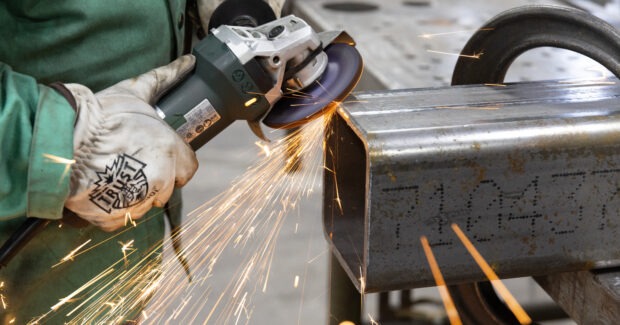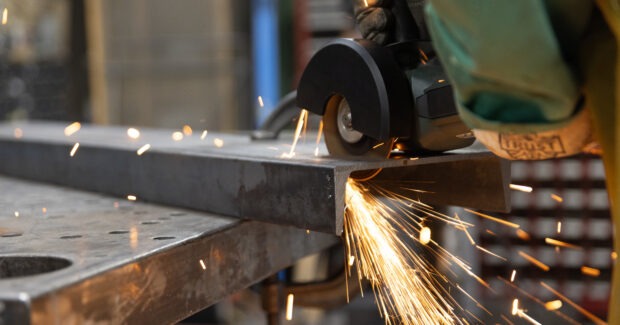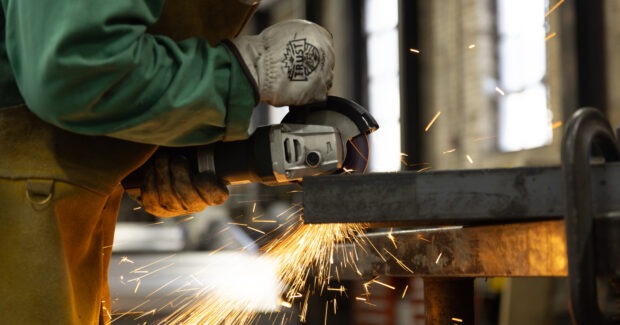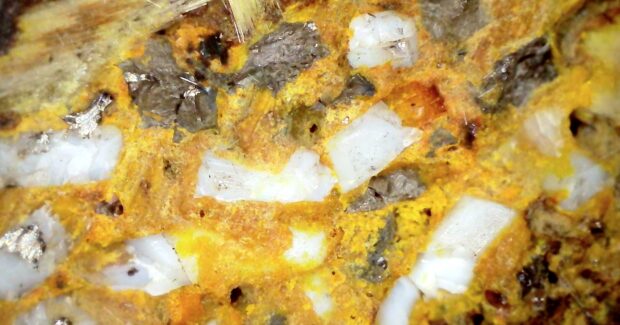When to Choose Bonded Abrasives With Ceramic Grains
The technology behind ceramic grains enhances their cutting efficiency and prolongs wheel life, ensuring superior results in even the most rigorous metalworking applications.
Posted: November 16, 2024
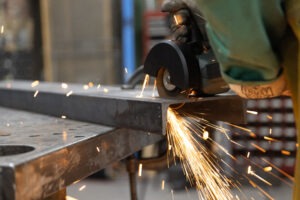
Bonded abrasive products with ceramic grains can deliver exceptional performance and durability in many metal fabrication applications. Unlike other abrasive wheels made with traditional grains such as aluminum oxide and zirconia alumina, wheels with ceramic grains offer significant productivity gains and a longer product life. This makes them a wise investment for many operations — especially those where the applications are demanding or when productivity needs to be increased.
So how do operations know if bonded abrasives with ceramic grains are the right choice for their needs? Companies should consider their key challenges and goals and evaluate the data to determine if abrasives with ceramic grains deliver the necessary return on investment (ROI).
Advantages of Ceramic Grains
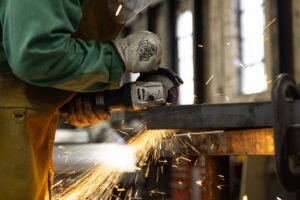
Ceramic grains can be used in many types of metal fabrication, though they are especially well-suited for use in demanding foundry and shipbuilding applications. They are also a good choice when working with stainless steel, Inconel or exotic metals, such as those found in aerospace applications.
Grinding and cutting wheels with ceramic grains offer several advantages that can deliver time and cost savings for operations. In cutting applications, wheels with ceramic grains cut faster, requiring fewer changeovers for increased throughput. Their longer product life also delivers similar benefits; getting more cuts out of a wheel also reduces time spent on changeover.
In grinding applications, bonded abrasives with ceramic grains provide greater material removal with reduced wheel consumption, which increases productivity. This differs from products made with softer grains, where a higher material removal rate typically uses up the wheel faster. This is not the case with ceramic grains, which have a harder bond and will fracture many times during a wheel’s life to keep the grains sharper longer.
When Should Operations Choose Ceramic Grains?
As previously mentioned, these abrasives excel in applications that require high material removal rates and resistance to wear, particularly in foundry and shipbuilding operations where harsh conditions and stringent quality standards prevail.
Abrasives with ceramic grains are also a good option for operations looking to increase throughput or those that struggle with labor shortages or meeting productivity goals. A switch to bonded abrasives with ceramic grains can help significantly improve productivity and therefore boost throughput. It can also help operations get more work done with fewer workers — or allow them to reallocate people to other areas of the operation where more help is needed.
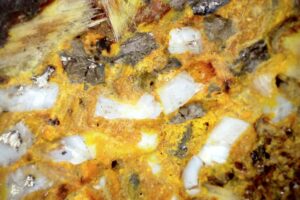
While the initial price of abrasives with ceramic grains is typically higher than other types of abrasive wheels, it’s important to look at the total cost over a wheel’s life and the ROI. These wheels offer a great price to performance ratio, and companies can measure their potential savings with testing and evaluation of their operation.
One such offering is the Weiler Consumable Productivity (WCP) program, which helps facilities find cost and time savings in their fabrication operations when they don’t have the resources or process to quantify results. The WCP process effectively and efficiently measures real-world data and identifies improvements by evaluating an operation and how abrasives are used in a facility using on-site testing.
It’s also key to choose ceramic wheels that offer innovative features and technologies that can add to their benefits and optimize performance. For instance, the Tiger® Ceramic 2.0 cutting and grinding wheel design goes beyond just using a new ceramic grain technology. Wheel life has been improved by increasing grain retention and product wear. Testing shows the new ceramic wheels deliver industry-leading product life with no reduction in cut speed — with the cutting wheels offering two times the life compared to the latest ceramic wheels on the market and the grinding/combo wheels providing up to 30% more product life. In addition, an advanced 2.0 bond formulation on the grinding wheels reduces uneven edge wear and chipping.
When investing in ceramic abrasives, it’s important to know users are getting the most out of the wheels. Too often, operators throw wheels away that are still usable. The Optimum Use Line on Tiger Ceramic 2.0 wheels helps ensure operators are using a wheel to its full life. This industry-first, patent-pending line is a visual indicator that reduces changeovers, allowing for greater productivity while also reducing waste and abrasive spend. Not only does it help operators know when the wheel is used to its full life, but it also helps managers know if wheels are being thrown away too soon. Using the product beyond the Optimum Use Line leads to a decrease in efficiency, as the wheel does not work as well. This means the innovation takes the guesswork out of knowing when the wheel life is complete. In some cases, users experience three times more efficiency than with their previous abrasives.
Tips for Optimizing Performance
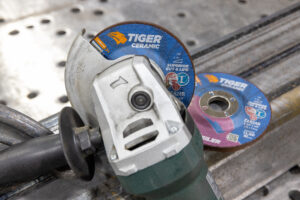
There are several things that users can do to optimize the performance of bonded abrasive products with ceramic grains.
- Choose a high-powered tool: These products are designed for use with a high-powered grinder. With air tools, use the highest horsepower rating available. When using electric tools, look for the highest available tool amperage rating for the size of wheel being used. Keep in mind that the product’s rpm rating should always be equal to or greater than the rpm rating of the tool it’s being used on.
- Watch the pressure: It’s important to let the wheels do the work as they are designed, so avoid pushing too hard or using too much pressure. These wheels are doing more work, and users can often feel the difference in the better cutting or faster grinding with ceramic wheels compared to other grain types.
- Use smooth movements: The rate of movement across the work surface can also have an impact on performance when using ceramic grains. Fast, choppy strokes typically produce less than optimal results, while longer, slower strokes allow the grain to do the work.
The Case for Wheels with Ceramic Grains
The technology behind ceramic grains enhances their cutting efficiency and prolongs wheel life, ensuring superior results in even the most rigorous metalworking applications. This makes them a go-to choice for operations seeking greater productivity and cost savings.





